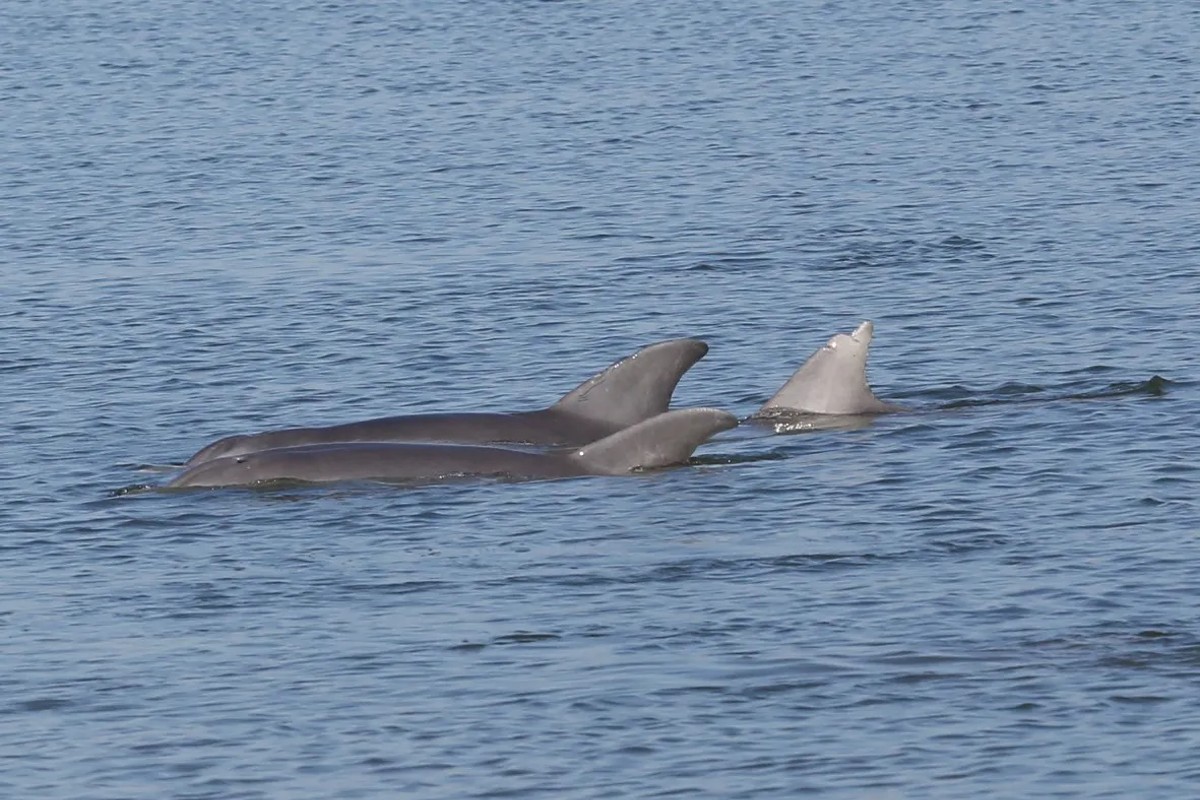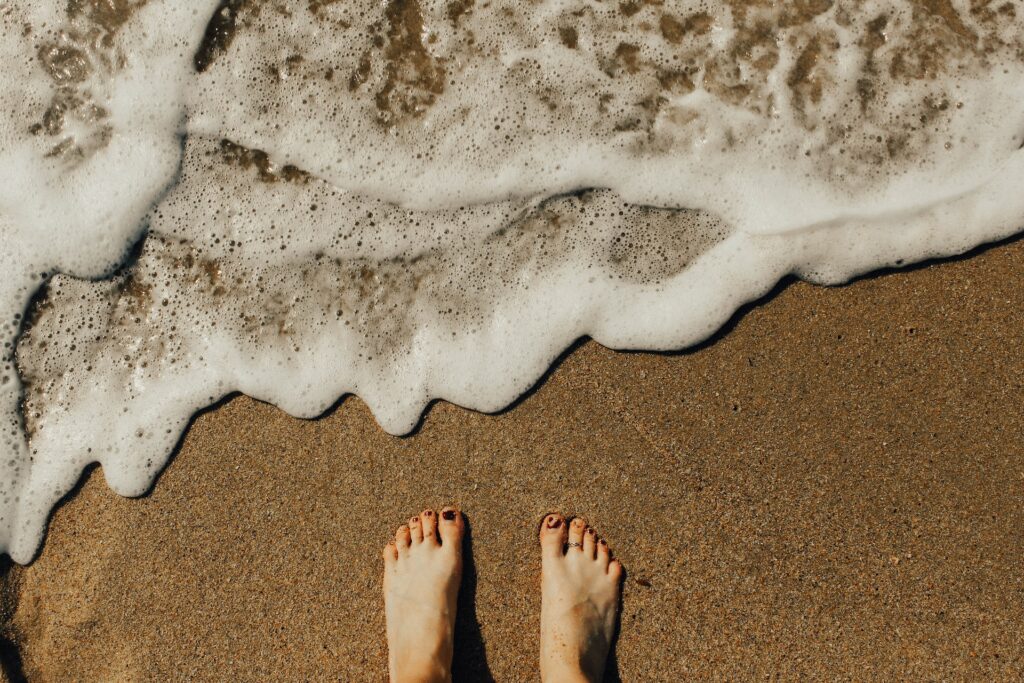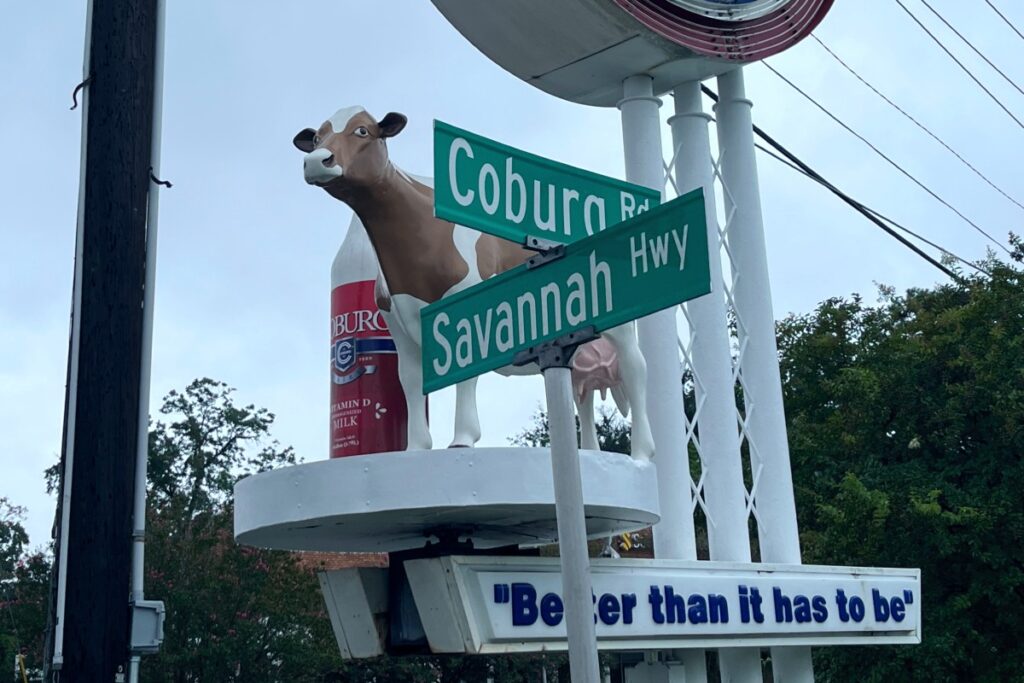STATEHOUSE REPORT | ISSUE 22.35 | Sept. 1, 2023
BIG STORY: New species of dolphins found in S.C.
WEEK IN REVIEW: Airports, roads, beaches to be packed
LOWCOUNTRY, Ariail: Forced carry
COMMENTARY, Brack: How nervous anticipation may lead to stronger communities
SPOTLIGHT: The Felkel Group
MYSTERY PHOTO: Top of a building
FEEDBACK: Send us your thoughts
New species of dolphins found in S.C.

Editor’s Note: We’re offering this story to illustrate the importance for state and federal leaders to keep and bolster environmental protections, such as the federal Marine Mammal Protection Act, which protects dolphins.
By Skyler Baldwin | The Lowcountry’s small population of estuary dolphins, long thought to be common bottlenose dolphins, are actually their own species, according to federal and university researchers.
After a decade of research analyzing DNA samples and morphological data from tissue samples, skulls and vertebral columns, researchers found coastal and estuarine dolphins evolved independently from their offshore counterparts and are more closely related to dolphins in the Gulf of Mexico and Caribbean. Researchers came from the National Oceanic and Atmospheric Administration, National Centers for Coastal Ocean Science and the University of Miami.
Ana Costa, a lecturer of marine biology and ecology at the University of Miami’s Rosenstiel School of Marine, Atmospheric and Earth Science, has been researching these populations of dolphins since 2014.
“We looked at the level of differentiation, and we could easily identify these shallow-water dolphins based on the samples we had,” she said. “It’s such a high level of differentiation, it led us to propose they were entirely different species.”
These dolphins are found along the Atlantic coast from New York to Florida, Costa said. Investigations are still ongoing as to whether they can be found further south in the Caribbean and along the coast of Mexico.
“The new species includes all of our estuary and river dolphins, which locally is about a 300-dolphin population,” said Lauren Rust, executive director of the Lowcountry Marine Mammal Network. “It also includes some coastal dolphins, those traveling just off the coast a few miles from South Carolina to Georgia.”
A total of 147 physically mature skulls and 43 vertebral columns were examined between 1966 and 2011 along the East Coast, according to a peer-reviewed journal written by researchers Costa, Wayne McFee, Lynsey Wilcox, Frederick Archer and Patricia Rosel. The differences they found between coastal dolphins and South Carolinian estuary dolphins were remarkable enough for researchers to suggest a total species divergence.
Researchers chose the new scientific name Tursiops erebennus, which was originally used in 1865 when the first description of a coastal bottlenose dolphin was published. This is distinct from the common bottlenose dolphins scientific name Tursiops truncatus.
Growing importance of conservation
![]() The new designation does not change the existing stock boundaries or protection status of the dolphins under the federal Marine Mammal Protection Act, which was championed in Congress by the late U.S. Sen. Fritz Hollings, D-S.C. Although not considered endangered, they are a strategic stock, meaning any small mortalities can have a large impact on the population.
The new designation does not change the existing stock boundaries or protection status of the dolphins under the federal Marine Mammal Protection Act, which was championed in Congress by the late U.S. Sen. Fritz Hollings, D-S.C. Although not considered endangered, they are a strategic stock, meaning any small mortalities can have a large impact on the population.
“These dolphins are the closest to the frontlines in human threats,” Costa said. “Right now, they are not endangered — there are a good number of these species we have identified. But it faces a lot of human threats. There are small populations of this species that live in restricted waters, like those found in Charleston. They can be highly affected by local threats such as entanglement, water pollution and even noise pollution.”
Rust said the differentiation of the species makes it more important than ever to protect the local dolphin population.
“It’s a big deal,” Rust said. “We have a huge responsibility to understand this and protect these dolphins. Having a local population is already important — we always say how critical they are. But when you make them their own species, it just strengthens that case.”
Rust said a discovery like this is uncommon. With bottlenose dolphins, she explained, there is a lot of population mixing as large groups migrate up and down the coast. But in Charleston’s case, the gene pool was more isolated, and the species developed separately from other bottlenose dolphins off the coast.
“There aren’t a lot of residential populations on the Atlantic Coast in the first place,” she said. “To have animals that stay in the same general area year-round is already pretty unique in itself. We knew they were unique. We knew we needed to protect them. This just adds an extra level to it.”
Skyler Baldwin is a reporter with the Charleston City Paper, where this story first appeared. Have a comment? Send to: feedback@charlestoncitypaper.com
Airports, roads, beaches to be packed for Labor Day

Staff reports | Just days after Tropical Storm Idalia blew through South Carolina with fury, the long Labor Day weekend holiday is now in people’s view. It will be the third busiest of the year so far, the Federal Aviation Administration predicts. Travel is up 4% domestically and 44% internationally, based on their bookings of flights, hotels, rental cars and cruises, according to AAA.
Those hitting the road can expect higher prices at the pump, with a national average of $3.83 per gallon, and South Carolina ranking in the top 10 in the country for the highest gas prices. The average price in the Palmetto state is $3.50 per gallon, according to AAA.
In other recent news:
Idalia’s flood levels will be monthly high tide norm, researchers predict. Twenty-five years from now, the monthly king tide alone will cause the same level of flooding that occurred during Tropical Storm Idalia, sea-level rise projections show. The 9.23-foot tide was the fifth-highest on record for the city. According to preliminary cost estimates from Moody’s Analytics, Hurricane Idalia caused between $12 billion and $20 billion in damage and lost output.
S.C. abortion ban stands at 6 weeks after state Supreme Court refuses to rehear case. The state Supreme Court will not reconsider its ruling on South Carolina’s abortion ban, keeping it illegal at roughly six weeks into a pregnancy. Meanwhile, here’s a story on how S.C.’s abortion law sounds to transgender men. For gender-expansive people in general and for transgender men in particular, South Carolina’s ban on most abortions after six weeks raises scary questions for the future, they say.
S.C.’s rural vote is in decline, hitting poor Black communities the most. South Carolina’s rural vote is dying in majority-Black counties across the state, with low voter turnout and participation in poor Black communities.
S.C. judge gives OK to $10.3B forever chemicals settlement. A Charleston federal judge has given preliminary approval to a minimum $10.3 billion settlement 3M Co. has proposed to settle the first phase of litigation over “forever chemicals” that contaminated public water systems.
Recreational boating has $6.5 billion impact in S.C. The industry has had a $6.5 billion economic impact in the state, said a nonprofit, which represents the state’s boat and fishing tackle manufacturers, citing a study from the National Marine Manufacturers Association.
Charleston area Democrats have a primary Tuesday for state Senate seat. The three progressives vying to represent the overwhelmingly Democratic district – state Reps. Wendell Gilliard, Deon Tedder and J.A. Moore – all have ideas about how to tackle the district’s woes from violence to education and gentrification. But their biggest issue may be voter turnout.
Forced carry

Award-winning cartoonist Robert Ariail generally has a biting or funny comment about the great state of South Carolina in his weekly cartoon. This week, he takes on a recent decision to allow a six-week abortion ban in South Carolina. Love the cartoon? Hate it? What do you think: feedback@statehousereport.com.
How nervous anticipation may lead to stronger communities

By Andy Brack, editor and publisher | There’s an uncomfortable and nervous anticipation that’s omnipresent as you wait for a big storm to blow through. It interferes with getting much of anything at all accomplished.
 Millions felt this sense of being stuck as Hurricane Idalia pounded Florida and then weakened to tear through south Georgia and South Carolina as a tropical storm.
Millions felt this sense of being stuck as Hurricane Idalia pounded Florida and then weakened to tear through south Georgia and South Carolina as a tropical storm.
As winds and rain pick up, you wonder whether you have enough water, milk, beer, flashlight batteries, snacks and toilet paper. You worry about the meat stored in the freezer and whether it will spoil if the electricity goes out.
You try to read, but end up checking a weather app on your phone too many times to see how close the madness is to your location. Then you worry whether the phone will have enough of a charge to keep going. So you get up and plug the phone in, only to check it again 15 minutes later – news, weather, Facebook and what I still call Twitter.
In places like Charleston and Edisto Beach that are near water and marsh, you worry about rain and wind like everyone else – will a limb or tree fall on the house, will the fence get blown down, will anything damage the car? Then you start thinking about storm surge and flooding, especially when there’s a Blue supermoon making tides much higher than usual.
Then you shake your head and try to stop your racing brain. But you still can’t read. So you turn on the television and see almost the same forecast you saw an hour earlier as the weatherman cranks into high gear with all sorts of fancy pictures, graphics and predictions. You watch television reporters getting rained on. You wonder where in the world the Weather Channel’s Jim Cantore is.
Then maybe you have a beer and try to take a nap on the couch. But a cat brushes up against you or the dog’s snoring is so loud that you can’t relax. More than anything with the storm on the way you just can’t relax.
You persevere. And then you start calling or texting friends, trying to figure out if they’re doing anything much different. (They aren’t.) But you talk and text and text and talk. Unbeknownst to you, millions of others are doing the same thing.
These conversations are magic – even for a short time. As you are catching up, you may realize you might not have had a deep conversation with the old friend for a while. You may begin to understand these connections during weather events are special. You and countless others strengthen and deepen friendships. Via phone, email and text, you show how you care for friends and, by extension, for our communities.
You also might start thinking about how many people are helping others before, during and after a storm – people filling sandbags, cooking meals, clearing yards, checking in with others to make sure they’re safe, cleaning up. These selfless acts knit our communities and make them stronger. These are the kinds of things that make our democracy stronger.
During a time when too many distrust the local, state and federal governments that civilize our nation, we need to bring a little of that connecting magic from a storm like Idalia to bear more fruit. Think of how good you feel knowing and seeing governments respond in times of crisis. They are a reassuring blanket with all of their emergency operations centers, warnings and checklists. And think about how you feel when you see a clean-up crew removing debris just hours after a storm’s impact or when the regular shift of a garbage truck resumes almost immediately.
Our governments can be a pain at times, but they often work. They are civilizing, vital components of a democratic society. Let’s use the kind of community spirit we have during storms and disasters to build our communities to be stronger every day of the year.
Andy Brack, editor and publisher of the Charleston City Paper and Statehouse Report, last week was named first-place winner for political columns in the 2023 national contest by the Association of Alternative Newsmedia. Have a comment? Send to: feedback@statehousereport.com.
The Felkel Group
 The public spiritedness of our underwriters allows us to bring Statehouse Report to you at no cost. This week in the underwriter spotlight is The Felkel Group, a battle-tested public affairs and business development firm that assists corporations, associations and not-for-profits that are serious about their long-term success. The Felkel Group solves problems, crafts and delivers messages, helps organizations to manage crises, and uses a wealth and breadth of valuable relationships to help to seal deals.
The public spiritedness of our underwriters allows us to bring Statehouse Report to you at no cost. This week in the underwriter spotlight is The Felkel Group, a battle-tested public affairs and business development firm that assists corporations, associations and not-for-profits that are serious about their long-term success. The Felkel Group solves problems, crafts and delivers messages, helps organizations to manage crises, and uses a wealth and breadth of valuable relationships to help to seal deals.
Now celebrating 25 years in business, the Felkel Group is also home to an outstanding advocacy tool called The Rap Index, a powerful intelligence tool that employs sophisticated computer modeling and profiling techniques to help organizations find their most effective advocates. To learn more about The Felkel Group and its Rap Index, go to: http://www.felkelgroup.com.
The top of an old building

The top of this old building is interesting. But where is it and what is it? Send us your guess of what this photo shows – as well as your name and hometown – to feedback@statehousereport.com.
 Last week’s “Needs painting?” is a photo of Mulberry Chapel Methodist Church near Pacolet in Cherokee County.
Last week’s “Needs painting?” is a photo of Mulberry Chapel Methodist Church near Pacolet in Cherokee County.
Super sleuth Allan Peel of San Antonio, Texas, explained the church’s importance: “Built sometime between 1880 and 1890, it is one of the few remaining African-American churches in South Carolina upcountry that dates back to the Reconstruction era.
“According to a write-up on the SC Picture Project here, the ‘Mulberry Chapel remained active until the 1940s. Though the church now stands largely dormant, members of the Littlejohn family still meet here annually for reunions’ and attempt to maintain the property as best they can. The family members are descendents of Major Jack Littlejohn (1794 – 1872), a white slave-owner who donated the land to the church in exchange for picking ‘the cotton off the land.’”
Bill Segars of Hartsville added, “I’ve been fortunate to visit Mulberry — under it, outside and inside of it. It needs more than a good coat of paint. It needs love, support, money and help to save it. “
Others who correctly identified the church were: George Graf of Palmyra, Va.; Elizabeth Jones and Jay Altman, both of Columbia; Michael Webb of Hartsville; Frank Bouknight of Summerville; and Pat Keadle of Wagener.
Send us your thoughts
We encourage you to send in your thoughts about policy and politics impacting South Carolina. We’ve gotten some letters in the last few weeks – some positive, others nasty. We print non-defamatory comments, but unless you provide your contact information – name and hometown, plus a phone number used only by us for verification – we can’t publish your thoughts.
- Have a comment? Send your letters or comments to: feedback@statehousereport.com. Make sure to provide your contact details (name, hometown and phone number for verification. Letters are limited to 150 words.
- ORDER NOW: Copies are in Lowcountry-area bookstores now, but if you can’t swing by, you can order a copy online today.
- Now available as an e-book!
ABOUT STATEHOUSE REPORT
Statehouse Report, founded in 2001 as a weekly legislative forecast that informs readers about what is going to happen in South Carolina politics and policy, is provided to you at no charge every Friday.
- Editor and publisher: Andy Brack, 843.670.3996
Donate today
We’re proud to offer Statehouse Report for free. For more than a dozen years, we’ve been the go-to place for insightful independent policy and political news and views in the Palmetto State. And we love it as much as you do.
But now, we can use your help. If you’ve been thinking of contributing to Statehouse Report over the years, now would be a great time to contribute as we deal with the crisis. In advance, thank you.
Buy the book
Now you can get a copy of editor and publisher Andy Brack’s We Can Do Better, South Carolina! ($14.99) as a paperback or as a Kindle book ($7.99). . The book of essays offers incisive commentaries by editor and publisher Andy Brack on the American South, the common good, vexing problems for the Palmetto State and interesting South Carolina leaders.
More
- Mailing address: Send inquiries by mail to: P.O. Box 21942, Charleston, SC 29413
- Subscriptions are free: Click to subscribe.
- We hope you’ll keep receiving the great news and information from Statehouse Report, but if you need to unsubscribe, go to the bottom of the weekly email issue and follow the instructions.
- Read our sister publication: Charleston City Paper (every Friday in print; Every day online)
- © 2023, Statehouse Report, a publication of City Paper Publishing, LLC. All rights reserved.
















 We Can Do Better, South Carolina!
We Can Do Better, South Carolina!